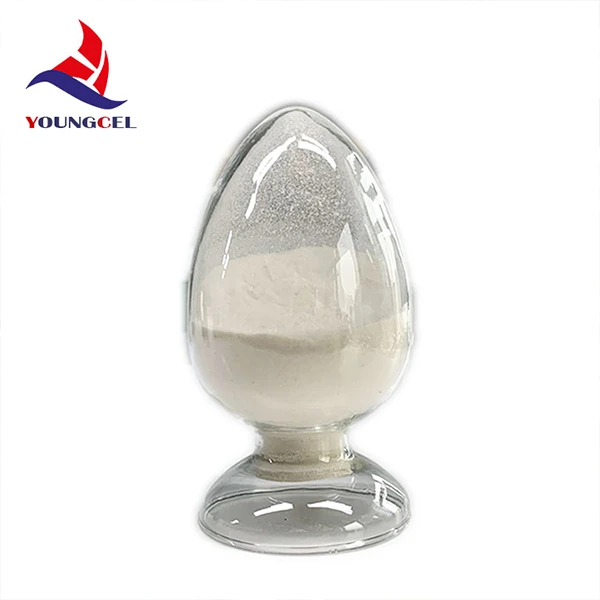The Role of Cellulose in Paints
Cellulose, a natural polymer derived from plant cell walls, is widely recognized for its various applications across multiple industries. Its unique properties, including biodegradability, non-toxicity, and film-forming capabilities, make it an essential ingredient in the formulation of paints. This article explores the role of cellulose in paints, its benefits, and the future outlook of cellulose-based products in the coatings industry.
Understanding Cellulose
Cellulose is the most abundant organic polymer on Earth, primarily sourced from wood, cotton, and other plant materials. It is a linear chain of glucose molecules linked by β-1,4-glycosidic bonds, resulting in a rigid, fibrous structure that imparts strength and stability. In the context of paints and coatings, cellulose is often processed into various derivatives such as cellulose ether, cellulose acetate, and microcrystalline cellulose, each serving different functional purposes.
Benefits of Cellulose in Paints
1. Film Formation One of the most significant roles of cellulose in paint formulation is its ability to form a continuous film upon drying. This film provides a barrier against moisture, dirt, and other environmental factors, enhancing the durability and longevity of the paint.
2. Thickening and Stabilizing Agent Cellulose derivatives like hydroxypropyl methylcellulose (HPMC) and carboxymethyl cellulose (CMC) are commonly used as thickening agents in water-based paints. They modify the viscosity of the paint, ensuring proper application and preventing settling of pigments, thus stabilizing the overall formulation.
3. Improved Flow and Workability The addition of cellulose can enhance the rheological properties of paint, ensuring smooth application without drips or splatters. This quality is especially important for both professional painters and DIY consumers who seek a user-friendly product.
4. Environmentally Friendly With growing environmental concerns, cellulose is becoming a preferred choice over synthetic polymers. As a biodegradable and renewable resource, cellulose aligns with the shift towards sustainable practices in the coatings industry.
cellulose for paints

5. Enhanced Adhesion Cellulose-based paints often exhibit better adhesion to surfaces, which is crucial for applications on varied substrates. This property helps maintain a strong bond, reducing the likelihood of chipping or peeling over time.
Applications of Cellulose in Paints
Cellulose finds its application in a variety of paint types, including water-based, latex, and even some oil-based formulations. In architectural coatings, cellulose helps provide a smooth finish and improved durability. In craft and specialty paints, cellulose is utilized for its thickening properties, enabling artists to achieve specific textures and effects.
Moreover, cellulose is also gaining traction in the development of eco-friendly paints that meet stringent environmental regulations and consumer demands for sustainable products. The rise of green paints, which emphasize low volatile organic compounds (VOCs) and non-toxic ingredients, has opened new avenues for cellulose in this sector.
Future Outlook
The future of cellulose in the paint industry looks promising, driven by increasing consumer demand for sustainable and eco-friendly products. As manufacturers continue to innovate and improve cellulose derivatives, the potential for enhanced performance and functionality in paint formulations will expand. Research into new cellulose sources, such as agricultural waste and non-wood plants, will further the sustainability of cellulose as a raw material.
Furthermore, the continued emphasis on reducing environmental impact will likely lead to increased regulatory support for cellulose-based products. This shift could catalyze advancements in cellulose processing techniques, allowing for greater efficiency and performance in paint manufacturing.
Conclusion
Cellulose plays a vital role in the formulation of paints, offering a range of benefits that include improved film formation, enhanced stability, and eco-friendliness. As the industry moves toward more sustainable practices, the importance of cellulose as a key ingredient will only grow. With ongoing research and innovations, cellulose is set to remain a cornerstone in the coatings industry, contributing to both performance and environmental responsibility.
-
The Application and Significance of Construction RdpNewsMay.19,2025
-
Industrial Grade HpmcNewsMay.19,2025
-
Building Coating Adhesive Building Coating Adhesive HpmcNewsMay.19,2025
-
Application Of Hpmc For Detergent For Detergent In DetergentsNewsMay.19,2025
-
Application Of Hpmc Cellulose In Cement-Based MaterialsNewsMay.19,2025
-
Application Of High Quality Hpmc For Construction In The Field Of ConstructionNewsMay.19,2025




